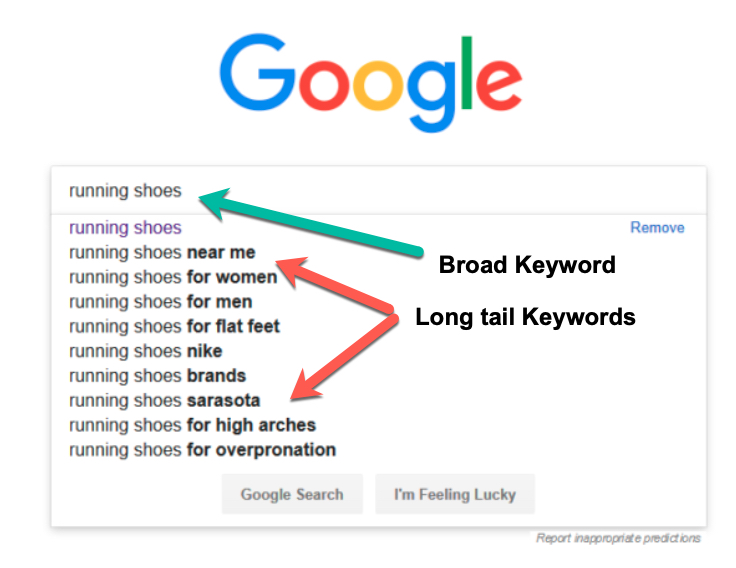How To Get Your Page to the Top of Google : Google has emerged as the top Search engine over the period. And it has become very important to maintain your website at the very top of the SERP ranking. So in this post, I will reveal exactly how to get your page to the Top of Google.
the current scenario it is very important to understand how you can keep your page at the top of Google ranking if your page is on the top of the SERP it will attract useful traffic for your website which will have. To understand more about how to get your page to the top of Google let me first describe the basics.
What Is Google Ranking?
Google ranking algorithm is a process set by Google to rank millions of pages available on the internet ( pages that are indexed in Google library) with relevance to the user’s search intent. When a user searches for a term on Google, its algorithm based on ranking factors ranks the top most pages on Google SERP for the user
There are many factors responsible for the ranking of the page on Google like relevancy with the search term, bounce rate, core web vitals content quality, keyword positioning, and many more.
Must Read : Google Rank Tracking Software
Why Ranking Your Page On Google Is Important?
Although you can bring traffic to your website with many different means like Google Ads, Facebook ads, social media channels, and many more organic traffic has very high relevancy with your web page which will result in people who are looking for the information that you are providing on your page to visit your website. This is the reason to learn How To Get Your Page to the Top of Google.
Getting your website ranked on Google will increase its credibility, and traffic, will improve the bounce rate, and could lead to actual conversions or leads.
Step By Step Guide On How To Get Your Page to the Top of Google?
- Do Keyword Research For The Content You are Planning Based On User Intent
- Create powerful content covering all the points around the topic you have chosen ( Don’t forget to add graphics )
- Improve the readability of the content by adding bullet points, infographics, images, or illustrations.
- Do On page optimization of the content
- Now Add LSI and related keywords to your content.
( Do Not Over Stuff ) - Plan Strong and highly relevant internal linking
- Outreach and build highly relevant backlinks for your content
- Track and Monitor the Results
- Keep updating your content regularly
Step #1: Keyword Research For The Content

Keyword research is very important lesson to learn when we are learning how to get your page to the top of Google. As there is a humongous amount of content indexed on Google its very difficult to get your content noticed on Google especially for high volume keyword so it is very important to identify a potential keyword with good volume for your content. But if you keep targeting the keyword with high volume it is possible that you won’t get ranked in the Google algorithm as there is a ton of useful content for that title.
Here comes and important concept named “Keyword Golden Ratio”. I am going to discuss in detail about this in my next blog on the same topic but for now let us know how it can help you create content that will rank.
Basically you need to narrow down your search to a keyword that will have a decent search volume with low search results. This is a keyword that people are finding important but webmasters around google haven’t covered content on this topic in detail.
Now once you have finalised the keyword your next step is :
Create Powerful Content Covering All The Points Necessary: How To Get Your Page to the Top of Google

Don’t Just start writing the content, first create a wireframe of the topics you want to cover while writing the content. It is not necessary to write thousands of words but you must write enough to cover all the pain points of the topics you are writing about.
First of all search for the keyword that you want to write about on a search engine and check out the results of SERP. here you will find the content that readers prefer on the top. Go through that content and create a rough wireframe of the content you want to write. Now you need to add some points that are not covered but you think are necessary also.
Once a wireframe is created structrise it from user’s point of view so that it serves the user best. Now start creating the content.
Keep the paragraphs of your content short and use as much graphic content as possible. Now you have created content that will make it easier in how to get your page to the top of Google.
Once you have created a content the next step is
Improve the Readability Of The Content
Improving the readability of content involves making it easier for readers to understand and engage with the text. Here are several tips to enhance readability:
1. Use Simple Language
- Avoid Jargon: Use plain language and avoid technical terms unless necessary.
- Use Short Sentences: Aim for sentences that are concise and to the point.
2. Structure Your Content
- Headings and Subheadings: Break up the text with clear headings and subheadings.
- Bullet Points and Lists: Use bullet points or numbered lists to organize information.
3. Be Concise
- Eliminate Redundancies: Remove unnecessary words or repetitive phrases.
- Focus on Key Points: Highlight the main ideas and avoid lengthy explanations.
4. Enhance Visual Appeal
- Whitespace: Leave ample whitespace around text to make it less overwhelming.
- Font and Size: Use readable fonts and a comfortable font size.
5. Use Active Voice
- Active vs. Passive: Prefer active voice over passive voice to make sentences more direct and lively.
6. Engage the Reader
- Questions: Ask questions to involve the reader.
- Examples and Analogies: Use examples or analogies to clarify complex ideas.
7. Check Readability Scores
- Tools: Use tools like Hemingway Editor or Grammarly to check and improve readability scores.
- Grade Level: Aim for a reading level that matches your target audience.
Example Transformation
Before:
In order to facilitate the optimization of the process, it is imperative that all necessary components are adequately assessed and that thorough evaluations are conducted. The utilization of advanced methodologies is highly recommended to achieve superior outcomes.After:
To optimize the process, assess all necessary components thoroughly. Use advanced methods for better results.By following these tips, you can make your content more accessible and engaging for your readers. It is an important step in how to get your page to the top of Google
On-Page Optimization Of The Page
On-page optimization is very important in How To Get Your Page to the Top of Google. Here are some key points to keep in mind for On page optimization
- SEO Title And Meta Description should be optimized for the focus keyword
- The heading structure of the page should be proper – Only one H1 followed by H2, H3, H4, H5 & H6 as and when required in descending order.
- H1 Must have the focus keyword followed by a uniform distribution of keywords around the titles
- Page URL should be SEO friendly and must have keywords
- All images and media included should have SEO-friendly URLs and alt tags
- Make sure there are no broken links on the page
- Make sure the page should have good core web vitals.
- Include OG tags
On Page optimization is most important part of How To Get Your Page to the Top of Google and if ignored could have drastic results so do regular audit of your website and keep checking these points.
Add LSI Keywords
Add More keywords to your content related to the keyword you are targetiing. Do not Over stuff only add where it is required and recheck the content for adding the keywords could lead to results not desirable to the users and would lead in negative impact.
Add Internal Linking To The Page
Internal linking is a powerful tactic to improve your website’s ranking. However, it must be used thoughtfully. Internal linking merely for the sake of it is not effective and can even be detrimental. Instead, focus on linking relevant pages to each other. This strategy not only helps users navigate your site more easily but also signals to Google that your pages are connected, allowing authority to pass from one page to another. Here are some additional points to consider:
Benefits of Internal Linking
- Improves User Experience:
- Helps visitors find related content, keeping them engaged longer on your site.
- Reduces bounce rates by providing easy access to valuable information.
- Enhances Crawlability:
- Makes it easier for search engine bots to discover and index all your pages.
- Ensures that all important pages are accessible to search engines.
- Distributes Page Authority:
- Passes link equity from high-authority pages to other pages, boosting their ranking potential.
- Helps in ranking for various keywords by linking to relevant anchor text.
Best Practices for Internal Linking
- Link Relevant Content:
- Ensure that the linked pages are contextually related and provide additional value to the reader.
- Avoid random or excessive linking, which can confuse both users and search engines.
- Use Descriptive Anchor Text:
- Use keywords that accurately describe the content of the linked page.
- Avoid generic anchor texts like “click here” or “read more.”
- Maintain a Logical Structure:
- Create a clear and logical site structure with well-organized categories and subcategories.
- Use a hierarchical linking approach, where important pages link to relevant subpages.
- Monitor and Update Links:
- Regularly check for broken links and update them to maintain a smooth user experience.
- Add new internal links when you publish new content that relates to existing pages.
- Limit the Number of Links:
- Avoid overcrowding a page with too many internal links, as this can dilute their value.
- Focus on linking only the most relevant and important pages.
Create Backlinks
Building highly relevant backlinks through outreach is a critical strategy for improving your website’s SEO and authority. Here are some detailed steps and strategies to effectively reach out and secure quality backlinks:
Steps to Build Highly Relevant Backlinks
Identify Target Websites:
- Look for authoritative websites in your niche.
- Use tools like Ahrefs, Moz, or SEMrush to find sites with high domain authority and relevance to your content.
Create High-Quality Content:
- Produce valuable, well-researched, and unique content that other sites would want to link to.
- Focus on creating resources like in-depth guides, infographics, case studies, or original research.
Build Relationships:
- Network with influencers, bloggers, and industry experts in your field.
- Engage with them on social media, comment on their blogs, and share their content to build rapport.
Craft Personalized Outreach Emails:
- Personalize your emails to make them stand out.
- Highlight the mutual benefit of the link and why your content is a good fit for their audience.
Use Guest Blogging:
- Offer to write guest posts for relevant websites in your niche.
- Ensure your guest post includes a link back to your site naturally within the content.
Leverage Broken Link Building:
- Find broken links on target websites using tools like Check My Links or Broken Link Checker.
- Reach out to the site owner, informing them of the broken link and suggesting your content as a replacement.
Submit to Resource Pages:
- Identify resource or link round-up pages in your niche.
- Reach out to the webmasters, suggesting your content as a valuable addition to their resource list.
Utilize PR Techniques:
- Write press releases for noteworthy content or news about your business.
- Distribute them through PR platforms and directly to journalists and bloggers.
Outreach Email Template
Here’s a simple template to guide your outreach:
Subject: Enhance Your Article with a Valuable Resource
Hi [Recipient’s Name],
I hope this message finds you well. I’ve been following [Website/Blog Name] for some time and particularly enjoyed your recent post on [Topic/Article Title]. The insights were incredibly valuable and resonated with many of the points I cover in my own content.
I recently published a comprehensive guide on [Your Content Topic], which I believe would be a perfect addition to your article. It provides [brief description of the key points or unique value of your content].
You can check it out here: [Link to Your Content]
I think it could offer your readers some extra value and complement the existing content on your page.
Thank you for considering it, and I look forward to hearing your thoughts.
Best regards,
[Your Name]
[Your Position]
[Your Website]
[Your Contact Information]
Best Practices for Outreach
- Be Genuine: Personalize each email to show genuine interest in the recipient’s work.
- Keep It Short: Be concise and get to the point quickly.
- Follow Up: If you don’t receive a response within a week, send a polite follow-up email.
- Provide Value: Emphasize how linking to your content benefits their readers.
Tracking and Adjusting Your Strategy
- Monitor Your Backlinks: Use tools like Google Search Console or Ahrefs to track new backlinks.
- Analyze Performance: Assess which outreach tactics and types of content generate the most backlinks.
- Refine Your Approach: Continuously refine your outreach strategy based on feedback and performance metrics.
By following these steps and best practices, you can effectively build highly relevant backlinks through strategic outreach, significantly boosting your site’s SEO and authority.
Update Your Content Regularly
Regularly updating your content is essential for maintaining its relevance, improving SEO, and providing value to your audience. Here are some key reasons and strategies for keeping your content fresh and up-to-date:
Improve SEO Rankings:
- Search engines favor fresh and updated content. Regular updates can improve your rankings and visibility.
- Updated content can attract new backlinks, increasing your site’s authority.
Enhance User Experience:
- Providing the latest information ensures your audience finds your content valuable and reliable.
- Regular updates keep your audience engaged and encourage repeat visits.
Reflect Industry Changes:
- Industries and topics evolve over time. Updating your content ensures it reflects the latest trends, research, and data.
Fix Errors and Broken Links:
- Regular reviews help identify and correct any outdated information, typos, or broken links.
Strategies for Updating Content
Conduct Regular Audits:
- Periodically review your content to identify pieces that need updating.
- Use tools like Google Analytics to find high-performing content that could benefit from a refresh.
- Add New Information:
- Include the latest data, statistics, and trends to keep the content current.
- Incorporate new case studies, examples, and user testimonials.
- Update SEO Elements:
- Refresh keywords based on the latest search trends.
- Update meta descriptions, titles, and tags to improve click-through rates.
- Improve Readability and Structure:
- Break up long paragraphs, add bullet points, and use headings to enhance readability.
- Incorporate images, videos, and infographics to make the content more engaging.
- Repurpose and Expand Content:
- Turn popular blog posts into other formats like videos, podcasts, or infographics.
- Expand on existing content by adding new sections or deep-diving into specific subtopics.
- Promote Updated Content:
- Share updated content on social media, in newsletters, and on other platforms to drive traffic.
- Reach out to websites that previously linked to the content, informing them of the update.
Example Transformation
Before Update:
In 2019, the best practices for SEO included keyword stuffing and link building. Companies focused on creating as many backlinks as possible to boost their rankings.After Update:
As of 2024, SEO best practices have evolved significantly. Modern strategies emphasize high-quality content, user experience, and natural link-building. Companies now focus on creating valuable, relevant content and earning organic backlinks from authoritative sites.Best Practices for Regular Updates
- Set a Schedule:
- Create a content calendar to plan and track updates.
- Regularly schedule time for audits and updates.
- Monitor Industry Trends:
- Stay informed about the latest trends, news, and changes in your industry.
- Subscribe to industry newsletters, follow key influencers, and participate in relevant forums and events.
- Engage with Your Audience:
- Encourage feedback from your audience to identify areas for improvement.
- Use surveys, comments, and social media interactions to gather insights.
- Leverage Analytics:
- Use analytics tools to track the performance of updated content.
- Adjust your strategies based on data-driven insights.
Conclusion
Regularly updating your content is a crucial practice that helps maintain its relevance, improves SEO, and enhances user experience. By conducting regular audits, adding new information, improving readability, and promoting updates, you can ensure your content remains valuable and engaging for your audience. Set a schedule, monitor industry trends, and leverage analytics to keep your content strategy on track and effective.

